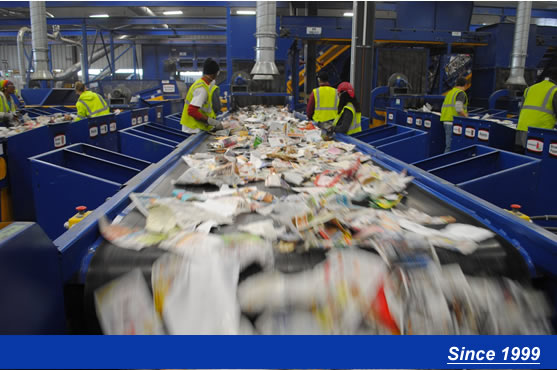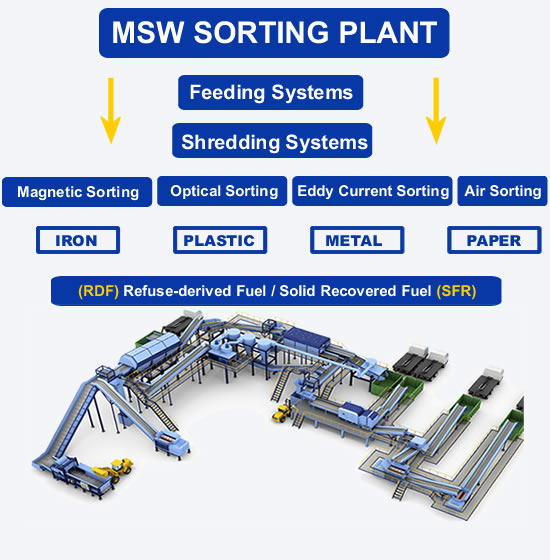Waste Sorting Equipment
MSWsorting Provide Complete Waste Sorting Machine and Equipment
WASTE SORTING PRINCIPLE
How does waste sorting machine work?
Municipal solid waste enters into the feeding system by grab or front loader, and then through pre-shredding and bag opening processing, by different screening equipment, such as trommel screens, ballistic screen, star screen and waste vibrating screen, separated waste to different size stream, and then use magnetic separation system, eddy current separation system, air separation system, optical sorting system and AI robot sorting system to get plastics, paper, metals and other recyclable materials. The organic waste is sorted out, it can be used for anaerobic digestion and biogas power generation, and the residue can be used for composting.After the inert waste is sorted out, it can be made into concrete aggregate, cement and building materials. The remaining non-recyclable high-calorific value waste often includes a small amount of mixed plastic film, a small amount of lightweight paper, composite fabrics, etc. After shredding, the size of this mixed waste is less than 50mm, which can be made RDF and SFR for incineration and power generation.


WASTE SORTING MACHINE WORKING PRINCIPLE
How does waste sorting machine work?
With guardance of this garbage sorting manual, you will have a brief idea about working principle about the waste sorting.
- Collect Municipal Solid Waste (MSW) to a garbage transfer station
- Manually pre-sorting large pieces of garbage in waste sorting center
- Separation of organic waste and inorganic waste with trommel screen
- Recycling ferrous metal with magnetic separator
- Recycling of non-ferrous metals with eddy current sorter
- Separating light waste from inert waste by the air sorting machine
- Adopt optical sorter to further sort recyclable waste such as plastic, paper, glass
Of course, other equpment will be applicated in the waste sorting plant to separate garbage. The principle and purpose of garbage sorting are to recycle, reduce and harmless
WASTE SORTING MACHINE
Strict compliance with ISO9001 quality management system standards
Belt Conveyor
Belt Conveyor for light waste components transportation
Plate Conveyor
Plate Conveyor for heavy waste components transportation
Manual Sorting Room
manual sorting room for manual sorting of waste
Rotary drum dryer
Rotary drum dryer for drying MSW or RDF to reduce moisture
RDF briquette Making Mac...
Refuse Derived Fuel (RDF) Making Machine for making RDF briquette...
Metal Baler
Metal Baler for packing metal recyclables
Plastic Bale and Paper B...
Waste Baler for packing recyclables plastic and paper
Fine Shredder
Lightweight, non-recyclable waste materials with high calorific v...
Pre Shredder
Waste Shredder, Pre Shredder
